| Botanical Name |
|
| Family |
Ebenaceae - The ebony family. |
| Pronunciation |
dye-oh-SPY-ros dye-kroe-FIL-uh |
| Common Name(s) |
English: Poison star-apple; Common Star-apple; Monkey Apple; Poison Peach
Afrikaans: Bloubos; Gewone Sterappel; Jakkalstolbos; gifsterappel
IsiZulu: Mugandani; umNqandane
|
| Plant Group |
- Tree A woody, self-supporting perennial plant usually with a single main stem and generally growing more than 6 meters tall.
|
| Plant Size |
- Medium
| Tree | 10m to 16m |
| Shrub | 1m to 2m |
| Perennial/ground cover | 40cm to 60cm |
| Bulb | 40cm to 60cm |
| Succulent | 40cm to 60cm |
- Very Small
| Tree | 3m to 4m |
| Shrub | 25cm to 50cm |
| Perennial/ground cover | Up to 10cm |
| Bulb | 10cm to 20cm |
| Succulent | Up to 5cm |
|
| Position |
- Canopy Shade Canopy shade is found below closely grown trees where some light filters through. Ideal for the protection of herbaceous plants.
- Light or Dappled Shade Found below trees with sparse, open foliage. Ideal for the protection of herbaceous plants.
- Partial Shade The area is in shade for part of the day and in full sun for part of the day.
- Sun The area is in full sun for all or most of the day, all year round.
|
| General Information |
- Attractive fruits, berries or seeds Brightly coloured fruits or berries increase and extend the visual impact of the plant and are especially attractive to birds and other small wildlife.
- Drought Tolerance: High The plant is well adapted to arid conditions; it can survive long periods of drought and high temperatures without extra water.
- Evergreen Plants that have leaves all year round.
- Frost: Half-hardy The plant is able to survive low temperatures and some frost but requires protection against severe frost.
- Sand tolerant Plants adapted to survive in nutrient poor, very sandy soils.
- Water Wise Plant species originating from low rainfall regions that require less water to survive and thrive than other plant species.
- Wind Tolerant Plants able to withstand the effect of strong winds.
|
| Specific Information |
Diospyros dichrophylla varies from a medium shrub to a small tree with a dense canopy of dark green leaves. It is an excellent, multipurpose, coastal tree which serves well in mixed hedges, as a pioneer species creating shade and shelter for slower growing vegetation or as a dense shrub for the garden. (Personally I find the smell of the rotting fruit objectionable and would not choose this species for a small garden.) The fruit is a rounded, slightly flattened berry up to 3cm in diameter, with a dense orange-yellow, velvety coating. Fruit ripens from March to October and is generally considered to be poisonous. This plant is restricted to the summer rainfall areas of South Africa and can tolerate some light frost and temperatures up to 39º C, but prefers a habitat with rainfall of around 1 000 mm annually. The poison star apple can reportedly tolerate more drought than would be expected, givien its natural distribution.
|
| Ad Break |
|
| Flowers |
| Description |
small, bell-shaped, drooping and somewhat inconspicuous, with male and female flowers on separate plants
|
| Season |
- Spring to Autumn Plants will seldom bloom for the entire season as given in the list, but should flower during a period within these parameters.
|
| Colour |
|
| Growth Rate |
- Moderate Specifying growth rate can be very misleading as there is considerable variation of growth rate depending on type and species of plant, available water, supplementary feeding, mulching and general care, as well as the plants suitability and adaptability to the garden environment.
|
| Plant Uses |
- Attracts bees, butterflies or other insects This plant attracts insects which can be food for birds or other creatures in your garden.
- Attracts Birds This plant will attract birds.
- Boundary A plant useful for planting around the edges of the property to form a green or colourful backdrop, an impenetrable hedge, to hide walls or create privacy.
- Filler Either a fast growing tree or shrub used temporarily to fill in an area while the permanent plants grow to a desired size, or a plant used to fill gaps in borders or beds.
- Hedge Suitable trees or shrubs planted relatively close together so that the branches intertwine to create a barrier. This can be formal – the plants are regularly trimmed to produce a neat shape, or informal – the plants are left to themselves to create a natural hedgerow.
- Pioneer for new gardens A very fast growing plant, able to withstand hardship, that can be used to populate land that has recently been cleared of natural vegetation. These plants pave the way for slower-growing species by adding nutrients to the soil and creating leaf litter.
- Provides deep shade A dense evergreen tree useful for a low light planting environment or for a recreational shade area.
- Screen A tall hedge of suitable plants planted closely together and used as a windbreak, to block a bad view, to separate parts of the garden or as a backdrop.
- Suitable for bonsai A shrub or tree that lends itself to being dwarfed.
- Suitable for coastal gardens Plants adapted to dry, sandy soil, forceful wind, limited rainfall and intense sunlight.
- Suitable for seaside gardens Plants that will survive the hostile environment of harsh salty winds, dry sandy soil, irregular rainfall and heat found in seaside gardens.
- Wild Garden An indigenous garden planted for the benefit of wildlife and birds. Provides food, water, a variety of mini-biomes and no poisonous chemicals are used.
|
| Distribution and Habitat |
from Montagu in the Western Cape, northwards along the coast belt of the Eastern Cape and Kwa-Zulu Natal, with a small population in the Limpopo Province, in coastal scrub, sandy flats, open grassland, wooded valleys, on rocky wooded hillsides and along forest margins
|
| Planting Suggestions |
|
| Medicinal Uses |
|
| Ad Break |
|


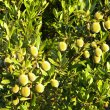
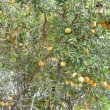
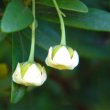
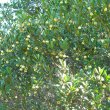
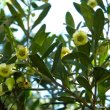
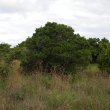
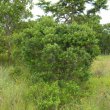
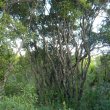



Discuss this plant
Share knowledge, ask a question or give an experience.